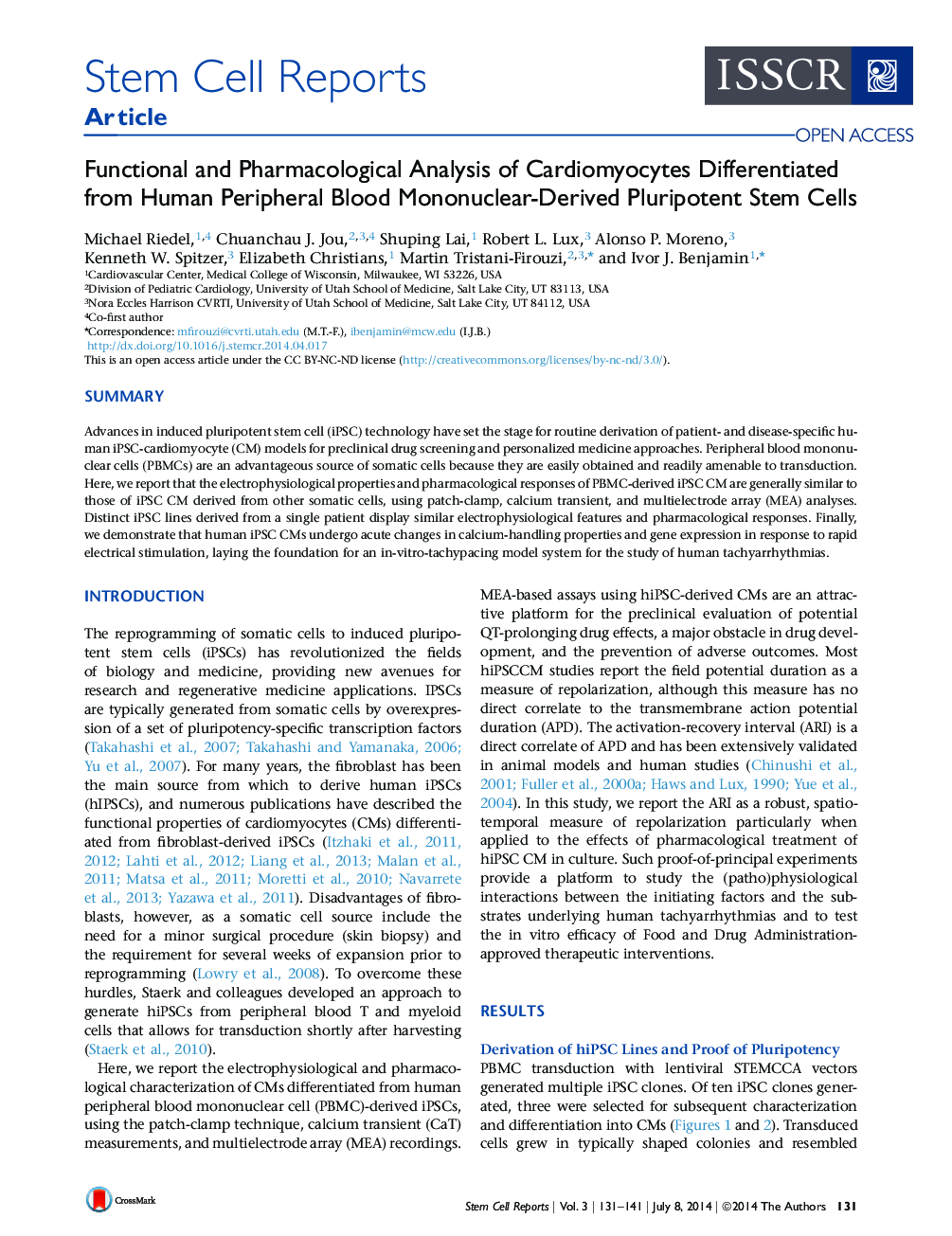| Article ID | Journal | Published Year | Pages | File Type |
|---|---|---|---|---|
| 2093386 | Stem Cell Reports | 2014 | 11 Pages |
•Peripheral blood mononuclear cells are an advantageous source of somatic cells•Functional analysis of peripheral blood mononuclear stem cell-derived cardiac cells•MEA-based activation-recovery interval robustly tracks repolarization•Stem cell-based tachypacing model for the study of human tachyarrhythmias
SummaryAdvances in induced pluripotent stem cell (iPSC) technology have set the stage for routine derivation of patient- and disease-specific human iPSC-cardiomyocyte (CM) models for preclinical drug screening and personalized medicine approaches. Peripheral blood mononuclear cells (PBMCs) are an advantageous source of somatic cells because they are easily obtained and readily amenable to transduction. Here, we report that the electrophysiological properties and pharmacological responses of PBMC-derived iPSC CM are generally similar to those of iPSC CM derived from other somatic cells, using patch-clamp, calcium transient, and multielectrode array (MEA) analyses. Distinct iPSC lines derived from a single patient display similar electrophysiological features and pharmacological responses. Finally, we demonstrate that human iPSC CMs undergo acute changes in calcium-handling properties and gene expression in response to rapid electrical stimulation, laying the foundation for an in-vitro-tachypacing model system for the study of human tachyarrhythmias.
